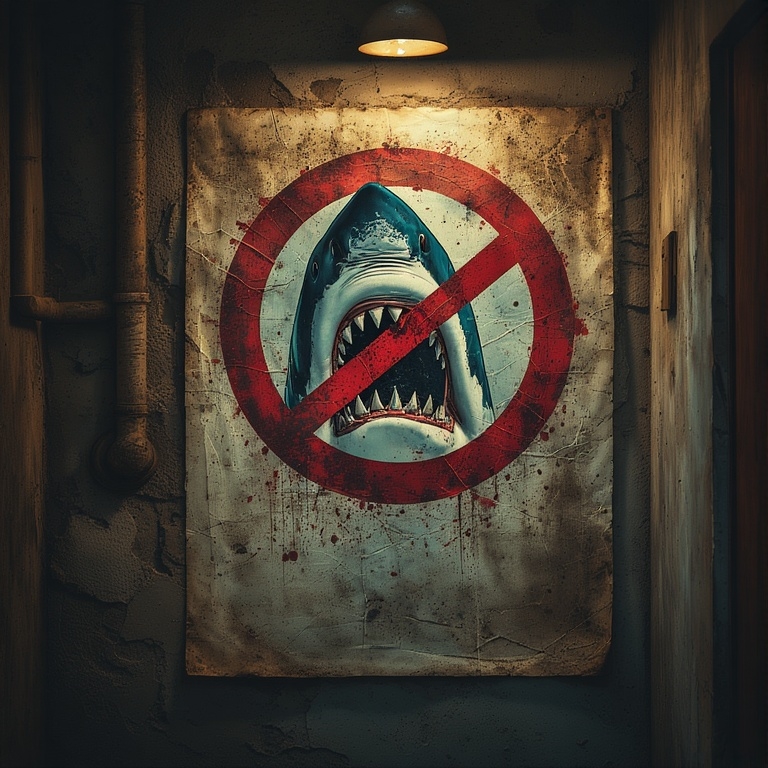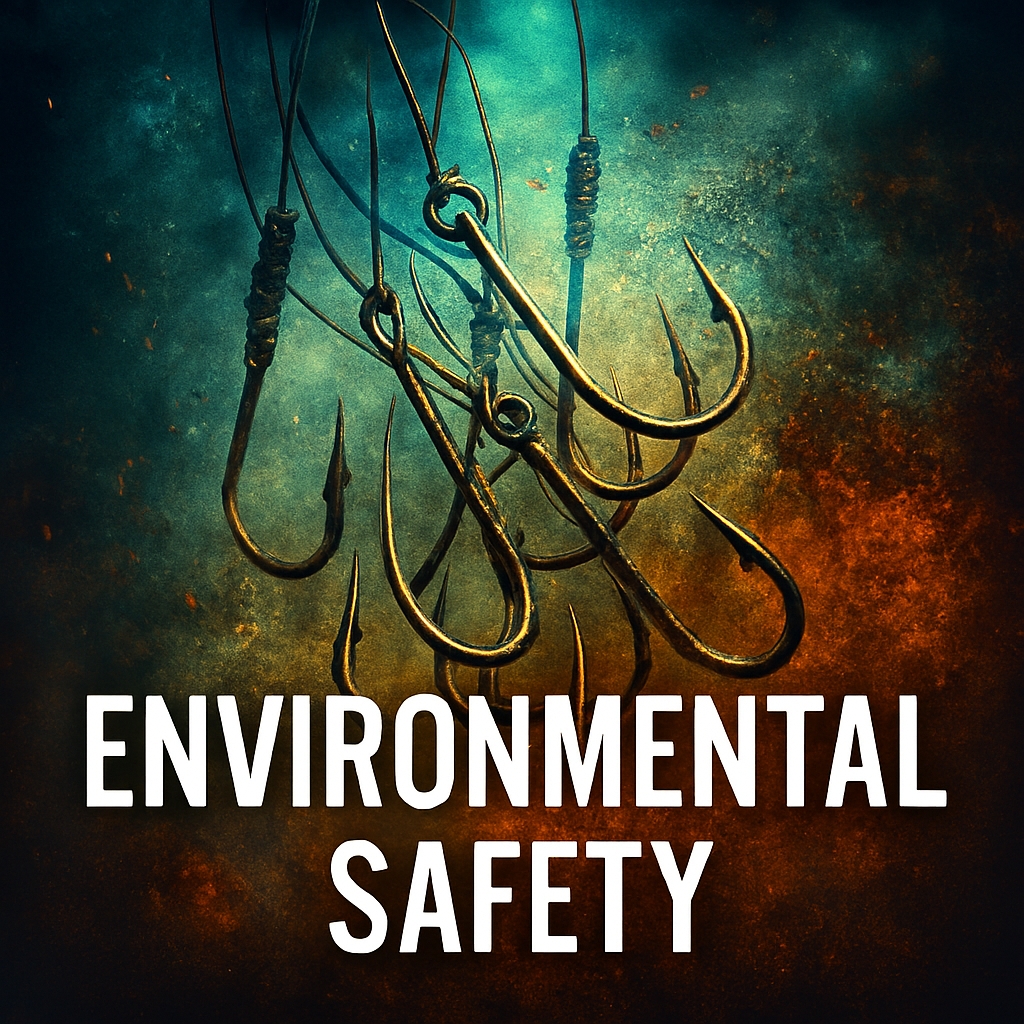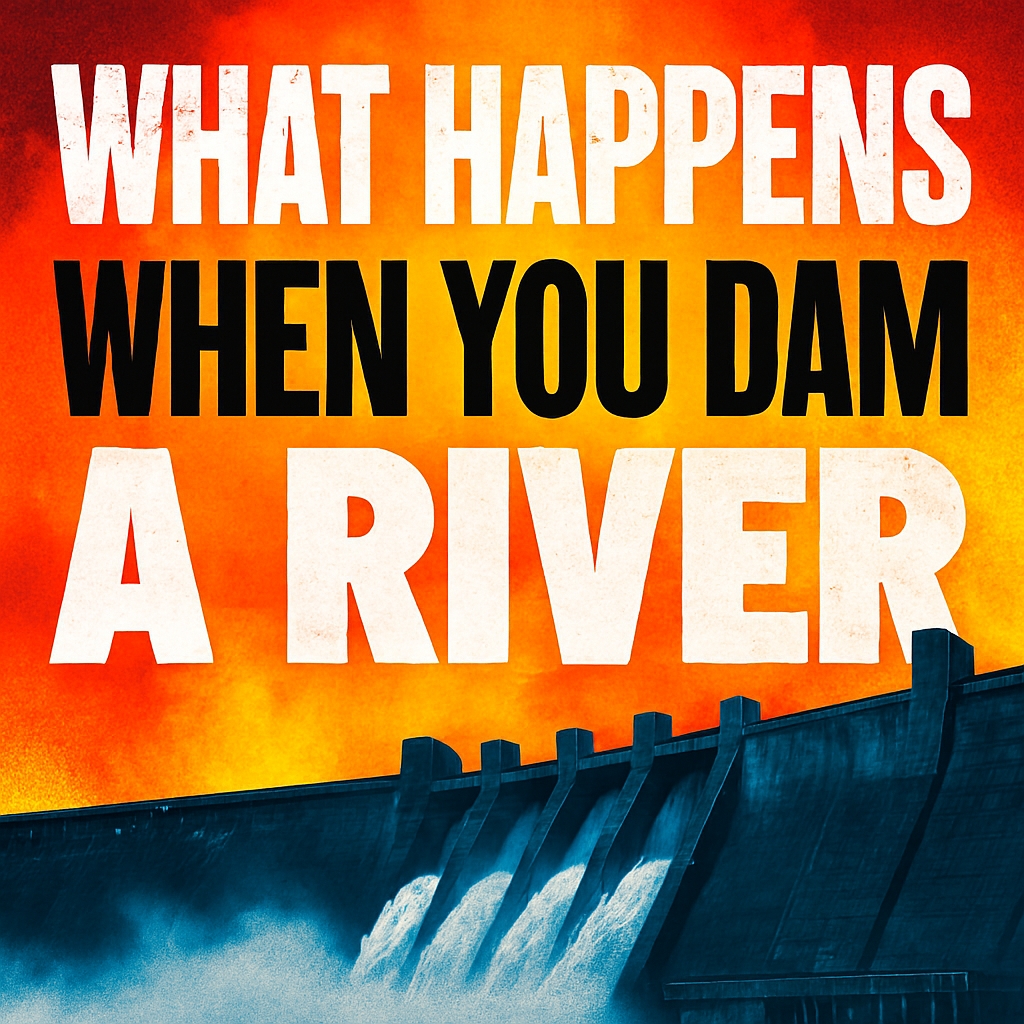Beneath the Surface of Shark Culling – Sharks Routinely Outswim the Barriers We Trust
Misplaced Confidence – How Shark Nets and Longlines Fail to Deliver Real Safety
What Culling Really Means – Targeted Killing with Unintended Consequences
Culling, in its simplest definition, refers to the selective removal or killing of animals from a population. In wildlife management, it’s often framed as a tool for controlling numbers, reducing perceived threats, or maintaining ecological balance. But in the context of Australia’s shark control programs, culling is not selective, scientific, or ecologically neutral—it’s indiscriminate killing driven by fear and political optics.
Shark culling typically involves the use of baited drumlines, longlines, and mesh nets to capture and kill large sharks deemed dangerous to humans. These methods do not discriminate between species, age, or ecological role. Endangered sharks, juveniles, and non-aggressive individuals are routinely caught and killed. The goal is not to manage a population sustainably, but to reduce the presence of sharks near popular beaches—regardless of ecological cost.
For shark populations, culling can have devastating effects. Many shark species are slow to reproduce, with long gestation periods and low birth rates. Removing mature individuals from the population—especially breeding females—can lead to long-term declines. Some species targeted by culling, such as tiger sharks and hammerheads, are already listed as vulnerable or endangered. Continued killing pushes them closer to extinction.
But the impact doesn’t stop with sharks. Culling disrupts entire food webs. Apex predators regulate the abundance and behavior of prey species, which in turn affect the health of coral reefs, seagrass beds, and fish populations. When sharks are removed, mid-level predators may proliferate, leading to overgrazing, habitat degradation, and reduced biodiversity. Non-target species—including dolphins, turtles, rays, and seabirds—are also frequently caught in nets and drumlines, suffering injury or death.
In short, culling is not a surgical tool—it’s a blunt instrument. It removes vital ecological regulators, destabilizes marine systems, and causes collateral damage to countless other species. Framing it as “management” obscures its true nature: a destructive practice that prioritizes human comfort over ecological integrity.

The Illusion of Safety – Shark Nets Are Not Barriers
Shark nets are widely misunderstood. They are not physical enclosures that prevent sharks from entering swimming zones. Instead, they are short sections of mesh—typically 150 meters long and about six meters deep—placed parallel to the shore. These nets do not reach the seabed, nor do they span the entire beach. They are designed to entangle sharks that happen to swim into them, not to block access. This means sharks can easily swim under, around, or over them. The ocean is a vast, dynamic environment, and these nets occupy only a narrow vertical slice of it. Their presence creates the illusion of safety, but in reality, they are passive fishing devices—not barriers.
Fear-Driven Policy – How Media Shapes Public Opinion
Public perception of sharks is heavily influenced by media coverage. Shark attacks, though statistically rare, are often sensationalized with dramatic headlines and imagery. This creates a disproportionate sense of danger, leading to widespread fear and anxiety. Politicians, responding to this fear, often implement visible measures like shark nets and drumlines to reassure the public but which allows the culling. These decisions are rarely based on scientific evidence or ecological impact. Instead, they are driven by optics—by the need to appear proactive. The result is a cycle of fear-based policy that prioritizes public perception over marine conservation and actual swimmer safety.

Political Optics – Why Governments Choose Visibility Over Science
Shark control programs are politically convenient. Deploying nets and drumlines allows governments to demonstrate action in response to public concern. These tools are visible, familiar, and easy to explain. In contrast, more effective alternatives—such as drone surveillance, smart drumlines, and public education—require investment, training, and nuanced messaging. They are harder to sell to a fearful public. As a result, governments often default to outdated methods that offer symbolic reassurance rather than real protection. This reliance on visibility over science undermines public trust and stalls progress toward sustainable marine policy.
Cultural Legacy – Dominance Over Nature
Australia’s relationship with its environment is shaped by a colonial legacy of control and conquest. From land clearing to wildlife management, the narrative has often been one of domination. Sharks, as apex predators, embody the wild and unpredictable. Culling them fits into a historical pattern of asserting human authority over nature. This mindset persists in policy and public discourse, reinforcing the idea that killing dangerous animals is a form of protection. Yet modern science tells a different story—one of ecological interdependence and the need for coexistence. Challenging this legacy requires a cultural shift toward respect and stewardship.

Public Ignorance – The Ecological Role of Sharks Is Misunderstood
Sharks are vital to ocean health, but their ecological role is poorly understood by the general public. As apex predators, they regulate marine populations, prevent the spread of disease, and maintain biodiversity. They help control the behavior and distribution of prey species, which in turn affects the health of coral reefs and seagrass beds. Without sharks, ecosystems become unbalanced, leading to overpopulation of certain species and degradation of habitats. Public education on these dynamics is lacking, allowing fear and misinformation to dominate. Bridging this knowledge gap is essential for building support for non-lethal shark management. Also the lack of knowledge on how this adds to the culling of sharks and other animals.
Tourism Pressure – Economics Over Ecology
Tourism is a major economic driver in coastal Australia. Beach safety is central to the industry’s appeal, and any threat—real or perceived—can impact visitor numbers. Governments, under pressure to protect tourism revenue, often resort to shark culling as a precautionary measure. This approach prioritizes economic optics over ecological integrity. Yet studies show that shark nets and drumlines do not significantly reduce the risk of encounters. Moreover, the ecological damage caused by these tools can undermine the very environments tourists come to enjoy. Sustainable tourism requires policies that protect both people and marine ecosystems.

Cruelty, Collapse, And Maybe Corruption
Celebration of Cruelty – When Shark Deaths Are Applauded
In some communities, shark captures are treated as victories. Social media posts showing dead sharks on hooks or in nets often receive praise and encouragement. This public celebration of animal death reflects a troubling desensitization to cruelty. It also reinforces the false belief that killing sharks makes beaches safer. Such reactions ignore the ecological importance of sharks and the ethical implications of their suffering. They also perpetuate fear-based narratives that hinder conservation efforts. Changing this culture requires empathy, education, and a shift in how we talk about marine life and human safety. Some people actually believe shark culling is good and or right.
The Barrier Reef Contradiction – Killing Sharks in a World Heritage Site
The Great Barrier Reef is one of the most iconic marine ecosystems on Earth. It is a UNESCO World Heritage site, home to thousands of species and a cornerstone of global conservation. Yet even here, shark culling continues. Nets and drumlines are deployed in reef-adjacent waters, killing apex predators that are essential to ecological balance. This contradiction undermines Australia’s environmental credibility. It also threatens the reef’s long-term health, as the removal of sharks disrupts food webs and accelerates coral decline. Protecting the reef means protecting its predators—not eliminating them.

Trophic Cascade – The Domino Effect of Removing Apex Predators
Removing apex predators like sharks triggers a trophic cascade—a chain reaction that destabilizes entire ecosystems. When sharks are killed, mid-level predators increase in number and overconsume smaller species. This leads to a decline in herbivores and filter feeders, which are crucial for maintaining coral health and water quality. The result is algae overgrowth, reef degradation, and biodiversity loss. These changes are not hypothetical—they have been observed in multiple marine systems worldwide. Shark culling doesn’t just affect individual animals; it reshapes the entire ecological landscape in ways that are difficult to reverse.
Behavioral Shifts – How Prey Species Disrupt Ecosystems
Sharks influence not only population numbers but also the behavior of prey species. Their presence forces prey to avoid certain areas, feed cautiously, and move strategically. This behavioral pressure helps maintain spatial balance in marine ecosystems. Without sharks, prey species become bolder and more concentrated, leading to overgrazing and habitat disruption. For example, in the absence of sharks, herbivorous fish may overconsume seagrass beds, affecting carbon storage and sediment stability. These subtle shifts have cascading effects on biodiversity and ecosystem resilience. Shark culling removes this regulatory force, allowing imbalance to take root.

Disease Control – Sharks Maintain Genetic Health
Sharks play a critical role in maintaining the genetic health of marine populations. By targeting weak, sick, or genetically compromised individuals, they help prevent the spread of disease and promote stronger gene pools. This natural selection process is essential for population stability and long-term resilience. Without sharks, disease outbreaks become more likely, and genetic diversity may decline. These effects are rarely considered in public debates about shark control, yet they are fundamental to ecosystem health. Preserving sharks is not just about species protection—it’s about safeguarding the integrity of marine life.
Coral Reef Collapse – Algae Overgrowth and Habitat Loss
Coral reefs depend on a delicate balance of species interactions. Sharks help regulate fish populations that control algae growth. When sharks are removed, these fish decline, algae proliferates, and coral struggles to survive. This process accelerates reef collapse, especially in systems already stressed by climate change and pollution. The Great Barrier Reef is particularly vulnerable, and shark culling exacerbates its decline. Protecting coral requires a holistic approach—one that includes predator conservation, water quality management, and climate action. Killing sharks undermines all of these efforts and pushes reefs closer to ecological tipping points.
Economic Fallout – Fisheries and Tourism at Risk
Healthy marine ecosystems support commercial fisheries, recreational activities, and tourism. Shark culling disrupts these systems, leading to long-term economic consequences. Overfishing of prey species, reef degradation, and loss of biodiversity reduce fish stocks and damage habitats. Tourists may be drawn to vibrant reefs and diverse marine life, but these attractions fade when ecosystems collapse. Indigenous communities and coastal economies suffer as resources dwindle. The short-term optics of shark control do not justify the long-term costs. Sustainable economic development depends on ecological integrity—not on killing the species that hold it together.

Ecological Keystone – Sharks Are Not Optional
Sharks are ecological keystones. Their presence supports the structure and function of marine ecosystems. Removing them is not a neutral act—it destabilizes food webs, alters species interactions, and weakens ecosystem resilience. Like pulling a keystone from an arch, the structure may hold temporarily, but collapse is inevitable. This metaphor is not just poetic—it reflects real-world outcomes observed in shark-depleted regions. Conservation is not about sentimentality; it’s about recognizing the functional importance of species and acting accordingly. Sharks are not optional—they are essential.
Bureaucratic Inertia – Why Policy Doesn’t Change
Despite decades of scientific evidence and mounting ecological concern, shark nets remain entrenched in coastal management policies. This persistence is not due to effectiveness but to bureaucratic inertia. Once a program is embedded in government operations, it becomes difficult to dismantle. Risk-averse politicians fear the consequences of change—especially if a shark incident occurs after nets are removed. Even when experts demonstrate that nets don’t prevent attacks, the political cost of appearing “soft on safety” is deemed too high. This fear of backlash leads to stagnation, where outdated policies are maintained simply because they are familiar.

Scientific Consensus – Experts Oppose Shark Nets
Marine scientists overwhelmingly oppose the continued use of shark nets. Numerous studies have shown that nets do not significantly reduce the risk of shark encounters and cause extensive harm to marine life. Advisory panels, conservation groups, and academic institutions have called for their removal and replacement with non-lethal alternatives. Yet these recommendations are often ignored or sidelined in favor of politically expedient solutions. The disconnect between science and policy reflects a broader failure to integrate evidence into decision-making. When expert consensus is dismissed, public safety and environmental integrity both suffer.
Alternative Solutions – What Actually Works
Effective shark mitigation does not require killing. Modern technologies offer smarter, more humane approaches:
- Drone surveillance provides real-time monitoring of shark activity, allowing lifeguards to respond quickly and accurately.
- Smart drumlines tag and release sharks, contributing to research while reducing lethal impact.
- Public education campaigns help swimmers understand risk, behavior, and safety protocols, reducing panic and promoting coexistence.
These methods are not only more ethical—they’re more effective. They allow for adaptive management, data collection, and community engagement. The challenge is not technological—it’s political. Implementing these solutions requires leadership, investment, and a willingness to move beyond fear-based governance.

Contractual Ties – The Economics Behind Shark Nets
The shark net industry is supported by long-standing contracts between governments and private operators. These contracts involve installation, maintenance, and monitoring services, often at significant public expense. While direct kickbacks are difficult to prove, the financial relationships between contractors and local councils raise questions about influence and accountability. Resistance to reform may stem not from safety concerns but from economic entanglements. When public funds support ecologically harmful practices, transparency becomes essential. Citizens deserve to know who profits from shark culling—and why alternatives are being ignored.
Lack of Transparency – Who Profits From the Nets?
Access to information about shark net programs is limited. Environmental impact assessments, contract details, and performance evaluations are often withheld or buried in bureaucratic language. This lack of transparency prevents public scrutiny and shields decision-makers from accountability. Without open data, it’s impossible to evaluate the true cost—financial, ecological, and ethical—of these programs. Transparency is not just a governance principle; it’s a prerequisite for reform. If shark nets are truly about safety, their operations should be subject to rigorous public oversight.

Risk Aversion – Fear of Political Fallout
Political leaders are often more concerned with avoiding blame than pursuing progress. The fear of being held responsible for a shark incident—even if unrelated to policy change—can paralyze decision-making. This risk aversion leads to the preservation of ineffective measures simply because they offer plausible deniability. If nets are removed and an attack occurs, the optics are damaging. If nets remain and an attack occurs, officials can claim they did everything possible. This logic prioritizes political survival over public safety and environmental stewardship.
Public Manipulation – Fear as a Governance Tool
Governments frequently use fear to justify shark culling. By amplifying rare attacks and downplaying ecological damage, they shape public opinion to support outdated measures. This manipulation erodes trust and fosters a culture of reaction rather than reflection. Fear-based governance is not unique to shark policy, but its consequences are particularly visible in marine conservation. When fear overrides facts, ecosystems suffer. Rebuilding public trust requires honesty, education, and a commitment to evidence-based policy.

International Hypocrisy – Campaigning Abroad, Killing at Home
Australia presents itself as a global leader in marine conservation. It campaigns against shark finning, supports international treaties, and promotes sustainable fisheries. Yet domestically, it kills thousands of sharks annually—including endangered species—under the guise of public safety. This contradiction undermines credibility and invites criticism from global conservation groups. If Australia wants to lead, it must align its domestic practices with its international rhetoric. Hypocrisy is not leadership—it’s evasion.
Legal Loopholes – How Protected Species Are Still Killed
Shark nets and drumlines routinely catch protected species such as hammerheads, tiger sharks, and grey nurse sharks. Legal loopholes allow these deaths to occur with minimal consequence. Reporting requirements are weak, enforcement is inconsistent, and penalties are rare. The law may recognize these species as vulnerable, but the policy does not reflect that recognition. This gap between legal status and operational reality exposes a failure of governance. Protecting species requires more than paperwork—it demands action.

Indigenous Perspectives – Disregarded in Policy
Indigenous Australians have long-standing relationships with marine environments. Sharks are often seen as totemic beings, spiritual guardians, and ecological partners. Traditional knowledge systems include seasonal awareness, respectful fishing practices, and deep ecological insight. Yet these perspectives are rarely included in shark control policy. The exclusion of Indigenous voices reflects a broader pattern of marginalization. Integrating traditional knowledge is not just respectful—it’s practical. It offers time-tested strategies for coexistence and conservation.
Sharks as Keystone Species – Not Killers, But Crucial
Sharks are not monsters. They are not expendable. They are apex predators, ecological regulators, and evolutionary survivors that have shaped ocean life for over 400 million years. And yet, we treat them like pests—slaughtered in the name of convenience, fear, and political theatre.
In the Environment – The System Breaks Without Them
Sharks are the architects of marine balance. Their role is not optional. They control prey populations, prevent ecosystem collapse, and maintain biodiversity. When sharks hunt, they shape the behavior of other species, keeping coral reefs, seagrass beds, and fish stocks in equilibrium. Remove them, and the system begins to rot.
- Population Control – Sharks eliminate the weak and diseased, strengthening prey populations and curbing outbreaks
- Habitat Protection – By regulating grazers like turtles and herbivorous fish, sharks prevent the destruction of vital habitats
- Biodiversity Enforcement – Their presence stops trophic cascades that unravel entire food webs
This isn’t abstract theory. It’s ecological fact. In places where sharks have been wiped out, reefs have collapsed, fish stocks have plummeted, and invasive species have surged. Culling doesn’t just kill sharks – it destabilizes everything.

To Humans – We’re Killing What Keeps Us Alive
Sharks are worth more alive than dead. They drive ecotourism, inspire scientific breakthroughs, and signal the health of oceans that billions rely on. Yet we vilify them, gut them, and discard their bodies like trash – all to soothe public anxiety and score political points.
- Ecotourism – Shark diving generates millions annually, sustaining local economies far more effectively than nets and drumlines ever could
- Scientific Insight – Their immune systems and evolutionary adaptations hold keys to medical advances we haven’t even unlocked
- Ocean Health – Sharks are indicators of marine resilience. Kill them, and you kill the system that feeds, protects, and sustains us
Let’s be clear – shark culling is not management. It’s ecological vandalism. It’s the deliberate destruction of a keystone species based on fear, not science. And the collateral damage? Dolphins, turtles, rays, and countless other species caught and killed in the same nets.
We don’t have a shark problem. We have a human problem – a refusal to understand the ocean, a willingness to destroy what we fear, and a political system that rewards ignorance over integrity.
Youth Activism – The Rising Voice Against Culling
Young Australians are increasingly vocal in their opposition to shark culling. Student-led campaigns, social media movements, and school-based education programs are challenging outdated narratives. These voices are informed, passionate, and unafraid to confront political inertia. Youth activism is reshaping public discourse, demanding transparency, and pushing for science-based policy. The next generation is not content with fear—they want facts, ethics, and accountability. Their leadership is a beacon for reform.

Global Backlash – Australia’s Reputation at Risk
International conservation organizations have condemned Australia’s shark culling programs. Continued use of lethal methods threatens the country’s reputation as a marine steward. Global scrutiny is intensifying, and diplomatic credibility is at stake. Australia cannot advocate for ocean protection abroad while undermining it at home. Reputation matters—not just for tourism, but for international cooperation and environmental diplomacy. Reform is not just a domestic issue—it’s a global imperative.
Moral Reckoning – What Kind of Nation Do We Want to Be?
This issue transcends science and policy—it’s a moral question. Do we value life, balance, and truth? Or do we cling to fear, convenience, and cruelty? Shark culling forces us to confront our values. It asks whether we are willing to evolve, to listen, and to lead. The answer will define not just our marine policy, but our national character. Are we a country that kills what it fears—or one that protects what it understands?
Final Thought – Confronting Cruelty, Collapse, and Maybe Corruption
Australia has the opportunity to lead the world in marine conservation. But first, it must confront its own contradictions. The shark culling program is a failure—scientifically, ethically, and politically. Ending it is not radical—it’s responsible. Reform is not a threat—it’s a promise. The ocean is watching. So is the world.
Join the Discussion – Speak, Share, Act
If this resonates, share it. If you disagree, challenge it. If you care, act. The ocean doesn’t need silence—it needs voices.
#StopTheCull #SharkConservation #BarrierReefTruth #EndSharkNets #ScienceNotFear #MarineJustice #ProtectOurOceans #NoMoreCulling #EcoEthics #AustraliaConservation

















The Silent Yet Powerful Mental Health Strength In Sports
[…] Sleep is the foundation of mental and physical recovery. It regulates mood, memory, decision-making, and hormonal balance. Yet athletes often sacrifice sleep for training, travel, or competition. Sleep deprivation impairs reaction time, emotional regulation, and injury recovery. Chronic sleep issues can lead to depression, anxiety, and burnout. Sleep hygiene—consistent routines, screen management, and relaxation techniques—should be treated as a performance strategy. Coaches must prioritize rest as rigorously as training. Recovery is not passive—it is an active process that requires psychological attention and cultural reinforcement. […]